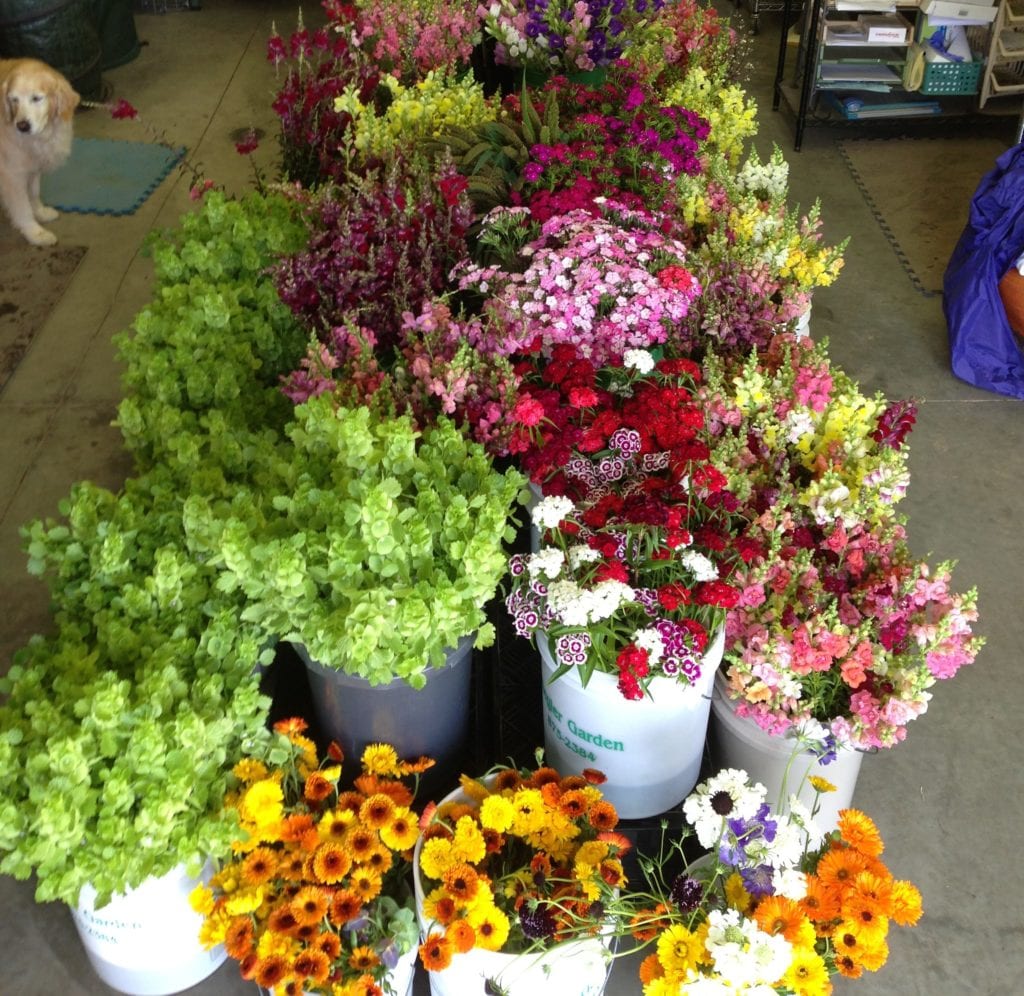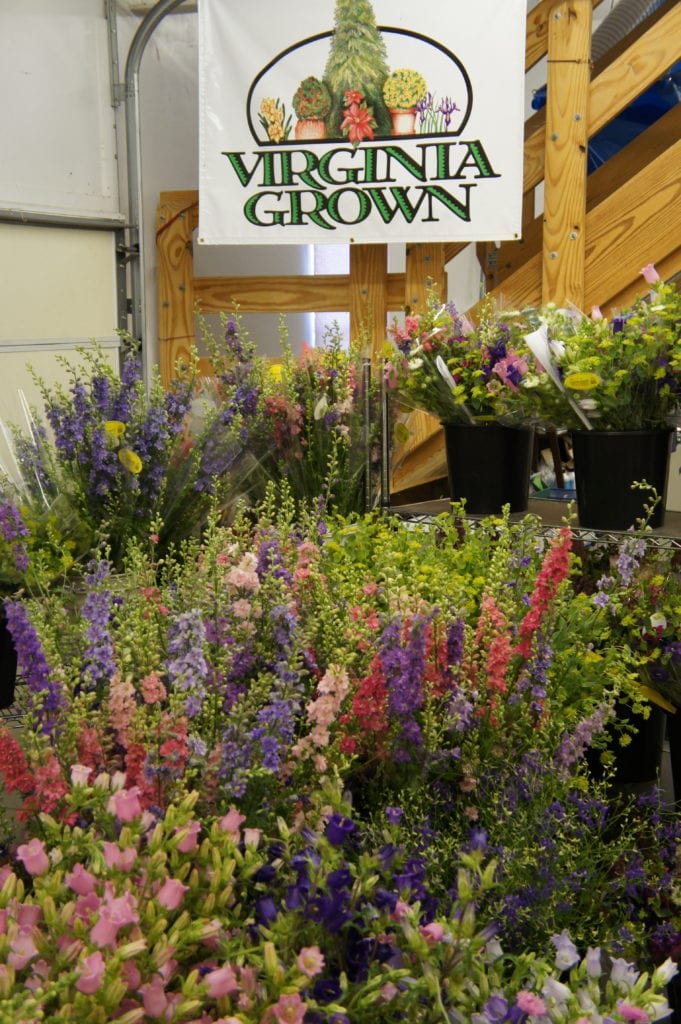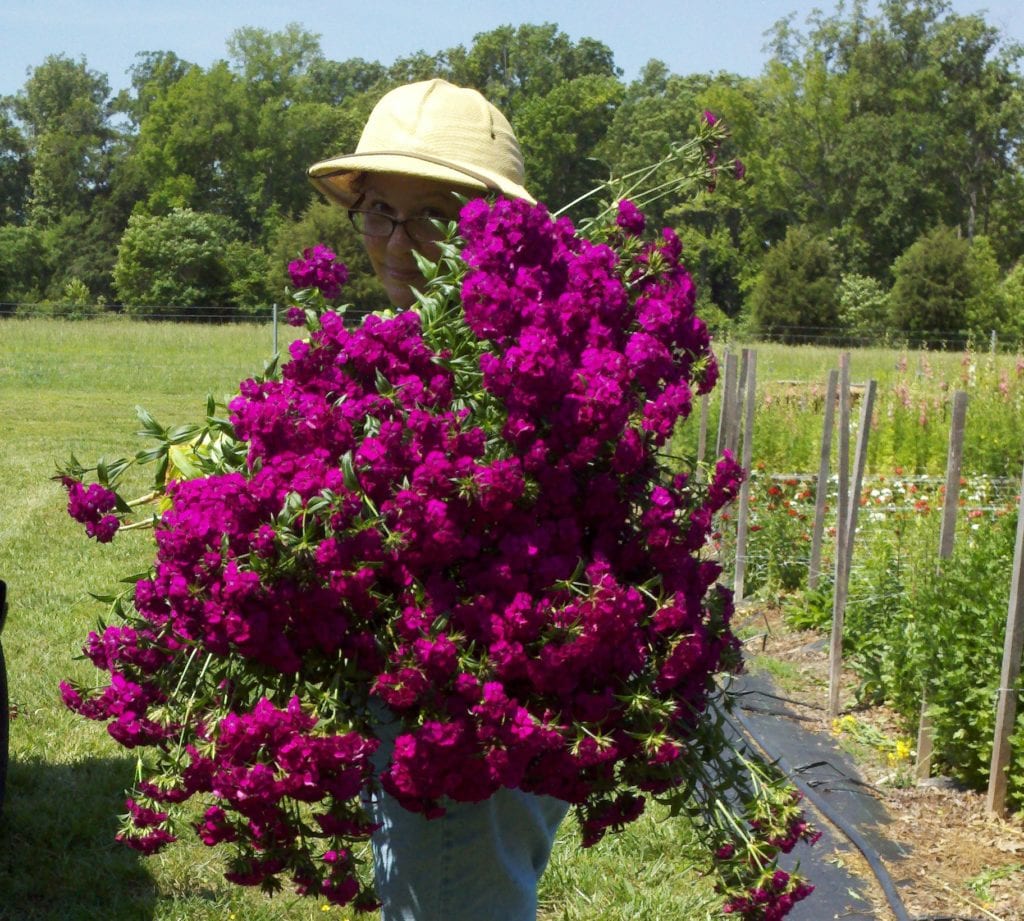By Lisa Mason Ziegler
Lisa Mason Ziegler is a cut-flower farmer, author, and nationally recognized speaker on organic cut-flower farming. She founded The Gardener’s Workshop and Flower Farming School Online, and is the award-winning author of Vegetables Love Flowers and Cool Flowers.
Lisa is one of 200+ farmers and food system professionals who will be leading sessions at our 2020 Sustainable Agriculture Conference, happening February 5–8 in Lancaster.

While most farmers are planting warm season annuals, we are overrun in harvesting cool-season annuals.
I stumbled into learning about cool-season hardy annual flowers a couple of decades ago. Flower farming had sparked my interest, and I wanted to jump in with both feet—but we were heading into winter. What now?
While I knew practically nothing about farming at that point, I did know this: I didn’t have funding to start buying large quantities of the classic fall plantings: bulbs and perennials. Then I read about a group of flowers that could be started from seed and preferred cold weather. I learned these cool-season hardy annuals didn’t just survive cold weather, but in fact, it is their secret sauce.
“Do a little digging and you’ll find that this practice of planting hardy annuals on the brink of cold weather beginning or ending was practiced in days gone by our grandparents and beyond.”
There are many misconceptions about cool-season hardy annuals; much of them rooted in the word “annual.” The most well known and popular annuals are warm-season, tender annuals like tomatoes, basil, and zinnias. Folks instantly think of this group and their needs when they hear the term “annual.”
But, oh boy, have we been missing out on some of the best flowers to grow! There is a whole pack of cool-season hardy annuals to include in the cash crop lineup: bells of Ireland, snapdragons, sweet William, poppies, sweet peas, rudbeckias, lisianthus, and others. These are some of the most beloved flowers and are in high demand in the commercial floral trade.
Cool-season annuals follow the same lifecycle as warm-season annuals, but have a very different planting timeline that few of us get right. The secret ingredient that determines success and longevity of harvest is when they are planted.

Mother’s Day harvest from the field. Before hardy annuals, I had little besides peonies ready for this major holiday.
• 6–8 weeks before the first fall frost for hardy annuals that are winter hardy in your growing zone. There are several for even the coldest zones.
• 6–8 weeks before the last spring frost for hardy annuals not winter hardy in your growing zone, and a repeat planting of some of the fall plantings to extend the bloom season.
• Fall planting should be done in a timely manner for the best success. Transplants need time to become established, and direct-sown seeds need time to germinate into a small plant before below freezing weather sets in.
• Early spring planting beds must be prepared in fall and held over until early spring. Soil is typically frozen, wet, and/or covered in snow, which prevents preparing beds at the proper planting time.
• All hardy annuals appreciate excellent drainage. This is because moisture lingers in cold soil.
• Use lightweight row-covered low tunnels. You’ll get significant benefits beyond temperature control, such as wind protection.
• Whenever a plant is winter hardy in your growing zone, it is beneficial to fall plant it. These well-established plants bloom earlier, have better disease and pest resistance, produce more abundance and stem length, and produce quality longer into the heat and humidity of summer.

Sweet William is a major cash crop in the floral industry. The Amazon series, pictured, does not require vernalization.
Hardy annual flowers have become known as “cool flowers” in the flower farming industry. They are named for my book Cool Flowers on this subject, which has rekindled the practice of cool-season hardy annuals playing a major role in fields and gardens worldwide.
Do a little digging and you’ll find that this practice of planting hardy annuals on the brink of cold weather beginning or ending was practiced in days gone by our grandparents and beyond. I contend that as folks became disconnected from gardening and home seed starting in the past decades, this group of plants and their awkward planting times fell to the wayside.
Once I understood the needs of these cool-season hardy annuals and found their best planting times for my farm, they have become the most carefree crops I grow. The bonus— they typically produce in spring, which is the highest demand season of all.
Check out Lisa’s books—and don’t miss her book signing at our 2020 Conference!